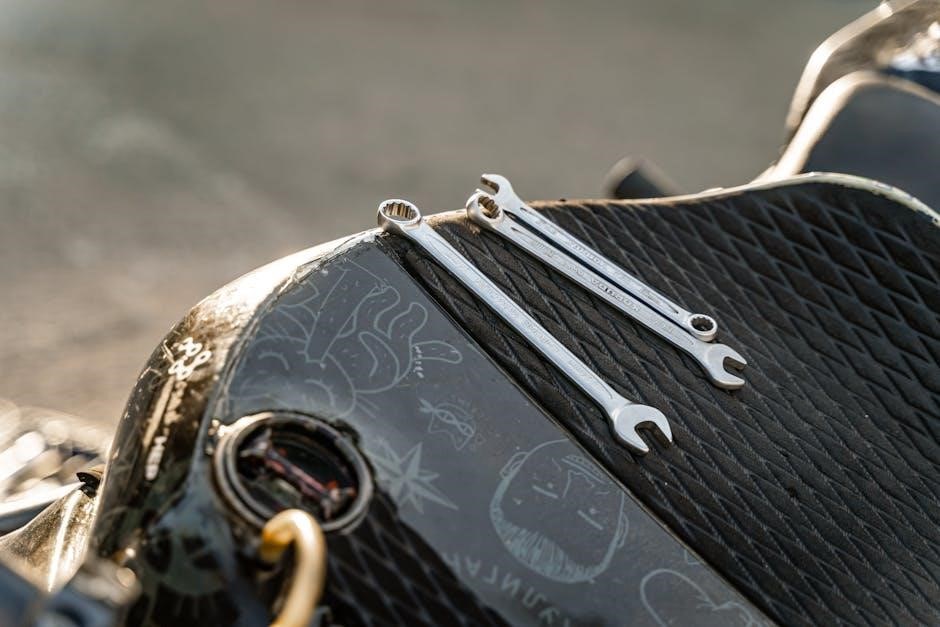Prioritizing child passenger safety demands understanding all-in-one car seats, encompassing hazard communication, risk assessments, and employer responsibilities for worker wellbeing․
Understanding the Importance of Proper Installation
Correct car seat installation is paramount for safeguarding children during vehicle travel, directly impacting injury prevention in accidents․ Employers prioritizing worker safety must extend this concern to employees transporting children․ A loose installation or incorrect harness routing significantly diminishes protective capabilities․
Understanding OSHA regulations and hazard communication regarding car seat materials is crucial․ Proper installation, alongside driver safety training, minimizes risks and ensures compliance with Federal Motor Vehicle Safety Standards (FMVSS) 213․
Decoding Car Seat Labels and Certifications
Car seat labels provide vital information regarding usage, weight limits, and FMVSS 213 compliance – a federal safety standard․ Understanding these certifications, alongside OSHA’s hazard communication standards for materials, is essential․
Labels also indicate expiration dates, crucial for maintaining optimal safety․ Employers have a responsibility to ensure employees are aware of these details when transporting children․ Proper decoding ensures the car seat meets rigorous safety requirements, protecting young passengers during travel․
Types of All-in-One Car Seats
Diverse options—convertible, all-in-one, and booster seats— cater to evolving child sizes, demanding employer commitment to safety and driver training resources․
Convertible Car Seats: Rear-Facing to Forward-Facing
These versatile seats transition from rear-facing for infants and toddlers, offering crucial protection during early development, to forward-facing as children grow․ Understanding weight and height limits is paramount, aligning with FMVSS 213 standards․ Proper installation, utilizing LATCH or vehicle seat belts, ensures stability․ Employers should emphasize driver safety training, recognizing motor vehicle accidents as a leading cause of worker injuries․ Regular inspection for wear and tear, alongside adherence to expiration dates, maintains optimal safety․ Prioritizing these aspects safeguards young passengers during every stage of travel․
All-in-One Car Seats: Covering All Stages
Designed for longevity, these seats accommodate infants through booster age, simplifying child passenger safety․ Hazard communication regarding materials is vital, ensuring worker understanding․ Proper harness adjustment and snug positioning are key, adhering to NHTSA guidelines․ Employers must commit to work vehicle safety, allocating resources for training․ Regular maintenance, including cleaning and component inspection, is crucial․ Understanding flammability standards and preventing ignition sources near car seats enhances fire safety, protecting occupants during all travel phases․
Booster Car Seats: Positioning for Older Children
Booster seats correctly position the vehicle’s seat belt for optimal protection of older children․ Driver safety training is paramount, reducing accident risks and protecting passengers․ Employers bear responsibility for employee passenger safety, implementing preventative measures․ Risk assessments identify potential hazards, ensuring a secure ride․ Maintaining awareness of fire safety, including ignition sources, is crucial․ Proper installation, adhering to FMVSS 213, remains essential for maximizing booster seat effectiveness and minimizing potential injuries․

Installation Procedures
Secure installation, utilizing LATCH or vehicle seat belts, is vital; angle indicators and recline adjustments ensure proper positioning, minimizing risks during travel․
Using LATCH System for Installation
The Lower Anchors and Tethers for Children (LATCH) system offers a convenient and secure installation method․ Locate the lower anchors in your vehicle’s seat bight – the space between the seat cushion and backrest․ Connect the car seat’s lower anchor connectors, ensuring a firm click․ Always verify a snug fit; minimal side-to-side or front-to-back movement (less than one inch) is crucial․ Remember to utilize the top tether when the car seat is installed forward-facing, further enhancing stability and reducing head excursion in a crash․ Proper LATCH usage significantly contributes to overall child passenger safety․
Securing with Vehicle Seat Belts
When the LATCH system isn’t feasible, or vehicle weight limits are exceeded, utilize the vehicle’s seat belt for secure installation․ Route the belt through the designated car seat belt path, following the manual’s specific instructions․ Ensure the belt lies flat, isn’t twisted, and is locked – often achieved by pulling the belt all the way out and then retracting․ Confirm minimal car seat movement (less than one inch) to guarantee a snug and stable fit, prioritizing child safety during travel․
Angle Indicators and Recline Adjustments
Proper recline is crucial, especially for rear-facing infants, ensuring head support and optimal airway alignment․ Utilize the car seat’s built-in angle indicators to achieve the correct recline position as specified in the manual․ Regularly verify the indicator remains within the safe zone․ Adjust recline settings as the child grows, maintaining appropriate positioning for each stage, contributing to overall safety and comfort during journeys․

Harnessing and Positioning
Secure positioning and correct harness adjustments are vital; ensuring a snug fit minimizes movement during impacts, protecting children from potential injuries․
Proper Harness Height Adjustment
Adjusting the harness height is crucial for optimal protection․ Ensure the harness straps originate at or above the child’s shoulders when in rear-facing mode, and at or below the shoulders when forward-facing․ Regularly check and adjust as your child grows, maintaining correct positioning․ Incorrect height compromises safety, potentially increasing injury risk during a collision․ A snug harness, combined with proper height, distributes crash forces effectively, safeguarding your little one․ Prioritize this adjustment with each use!
Chest Clip Placement Guidelines
Position the chest clip at armpit level – this is vitally important! The clip’s purpose isn’t to restrain, but to keep the harness straps correctly positioned on your child’s shoulders․ It prevents straps from slipping off, maximizing crash protection․ Never place the clip on the stomach or neck․ Regularly verify proper placement during each use, ensuring a secure and comfortable fit․ Prioritizing correct clip positioning contributes significantly to overall car seat safety․
Ensuring a Snug and Secure Fit
Achieving a snug harness fit is paramount for optimal protection․ After buckling, pinch the harness strap at the shoulder; if you can gather any slack, tighten it further․ The harness should lie flat, without twists․ A proper fit minimizes movement in a crash․ Regularly check and adjust as your child grows, maintaining a secure, comfortable experience․ Remember, a well-fitted car seat significantly reduces injury risk during vehicle incidents․

Safety Standards and Regulations
Compliance with FMVSS 213 and NHTSA ratings is crucial, alongside understanding expiration dates, ensuring all-in-one car seats meet rigorous safety benchmarks․
Federal Motor Vehicle Safety Standards (FMVSS) 213
FMVSS 213 establishes performance requirements for child restraint systems, including all-in-one car seats, ensuring they protect children during vehicle crashes; These standards cover crash testing, component strength, and labeling requirements․ Meeting FMVSS 213 is legally mandated for all car seats sold in the US․
The standard details specific testing procedures simulating various crash scenarios, evaluating the seat’s ability to restrain a child and minimize injury risk․ Manufacturers must demonstrate compliance through rigorous testing and documentation submitted to the National Highway Traffic Safety Administration (NHTSA)․
NHTSA (National Highway Traffic Safety Administration) Ratings
NHTSA provides car seat ratings based on ease of use and evaluation of how well the seat protects a child in a crash․ While not mandatory, these ratings offer valuable insights for consumers․ NHTSA’s assessments consider factors like installation accuracy, harness adjustments, and labeling clarity․
Higher ratings indicate a car seat is easier to install correctly and offers better protection․ Parents should consult NHTSA’s website for the latest ratings and reviews before purchasing a car seat, supplementing FMVSS 213 compliance checks․
Understanding Expiration Dates
Car seats have expiration dates, typically six to ten years from the date of manufacture, due to plastic degradation and potential component failure over time․ These dates are clearly marked on the seat itself․ Using an expired car seat compromises its structural integrity and safety performance․
Even without accidents, plastics weaken․ Always check the expiration date and replace the seat accordingly, ensuring optimal protection for your child․ Ignoring this can lead to serious injury during a crash․

Common Installation Errors
Frequent mistakes include loose installations, incorrect harness routing, and failing to utilize the top tether, all diminishing the car seat’s protective capabilities significantly;
Loose Installation and Movement
A car seat shouldn’t move more than one inch side-to-side or front-to-back when tested at the belt path․ Improper tightening of the LATCH system or vehicle seat belt is a primary cause․ Regularly check for secure attachment, as movement compromises protection during a crash․ Employers prioritizing worker safety must ensure proper installation knowledge is available, reducing risks associated with transporting employees’ children․ Risk assessments should include verifying car seat stability as part of a broader safety protocol․
Incorrect Harness Routing
Misrouting the harness – using slots above the child’s shoulders for a rear-facing seat, or below for forward-facing – drastically reduces crash protection․ Always follow the car seat manual’s specific routing instructions․ Employers have a responsibility to communicate these safety standards, especially for employees transporting children․ Hazard communication regarding proper harness use is crucial․ Regular checks during risk assessments should verify correct routing, preventing potential injuries during vehicle incidents․
Failure to Use Top Tether
Omitting the top tether when forward-facing significantly increases head excursion during a crash, elevating injury risk․ The tether stabilizes the seat, minimizing rotation and reducing the force on the child․ Employers should integrate tether usage into driver safety training programs․ Risk assessments must confirm tether anchor point accessibility and proper connection․ Hazard communication should emphasize this critical safety feature, aligning with OSHA’s focus on worker protection and accident prevention․

Maintenance and Cleaning
Regular inspection for wear and tear, alongside gentle fabric cleaning, ensures continued safety and functionality, upholding standards for worker and passenger protection․
Cleaning Car Seat Fabrics
Maintaining a clean car seat is crucial for hygiene and longevity․ Refer to the manufacturer’s instructions for specific cleaning recommendations, as harsh chemicals can degrade materials․ Generally, mild soap and water are sufficient for surface cleaning, removing spills and debris promptly․ Ensure fabrics are completely dry before reinstalling to prevent mildew․ Regular vacuuming helps remove particles, contributing to a safer environment․ Prioritizing cleanliness aligns with broader workplace safety, emphasizing hazard communication and preventative measures for all passengers, mirroring employer responsibilities for a secure journey․
Inspecting for Wear and Tear
Regular inspection is vital for identifying potential safety compromises․ Check the harness straps for fraying, cuts, or damage, and ensure the buckle functions smoothly․ Examine the car seat shell for cracks or weaknesses․ Verify all components are securely attached, mirroring OSHA’s emphasis on hazard identification․ Addressing wear promptly is a preventative measure, aligning with risk assessments and employer responsibilities․ Ignoring damage could lead to failure during an accident, highlighting the importance of proactive maintenance for optimal child passenger protection․
Replacing Damaged Components
If inspection reveals damaged components – harness, buckle, shell – immediate replacement is crucial, mirroring OSHA’s focus on safety․ Never attempt repairs; use only manufacturer-approved parts․ A compromised car seat poses a significant risk, negating safety standards․ Document the damage and replacement for record-keeping․ Prioritize proactive replacement, aligning with risk assessments and employer responsibilities for worker safety when transporting children․ Ignoring damage jeopardizes passenger wellbeing, emphasizing the need for diligent maintenance and adherence to safety protocols․

Emergency Situations
Post-accident, prioritize passenger health, then car seat inspection; replacement is often necessary, mirroring OSHA’s focus on immediate hazard mitigation and worker protection․
What to Do After a Car Accident
Immediately following a collision, ensure everyone’s physical well-being is the top priority, seeking medical attention as needed․ Document the accident thoroughly, including photos and police reports․ Critically, inspect the car seat for any visible damage or compromise to its structural integrity․ Even seemingly minor impacts can affect a car seat’s protective capabilities․ Following an accident, it’s crucial to understand that a car seat may need replacement, aligning with OSHA’s emphasis on hazard identification and mitigation․ Contact the car seat manufacturer for guidance, and prioritize a new, certified seat for future travel, ensuring continued child passenger safety․
Car Seat Replacement After an Accident
Generally, a car seat should be replaced after any car accident, even if damage isn’t apparent, to guarantee continued protection․ This aligns with proactive risk assessment principles․ Manufacturers’ guidelines are paramount; consult the ‘safety first’ manual․ Following an incident, documentation—police reports, photos—is vital․ Prioritize a new, certified car seat, mirroring OSHA’s hazard communication standards․ Replacement ensures the seat’s structural integrity hasn’t been compromised, safeguarding against potential future injury, and upholding the highest safety standards for your child․
Emergency Contact Information
Maintaining readily accessible emergency contacts is crucial․ Include 911, your local poison control center, the car seat manufacturer’s customer service (refer to the ‘safety first’ manual), and your pediatrician․ Employers should also have emergency protocols, aligning with OSHA regulations․ Documenting these contacts, alongside the car seat’s model and purchase date, aids post-accident investigations․ Prioritize clear communication during crises, ensuring swift access to vital support and resources for both immediate medical needs and car seat replacement guidance;

Legal Considerations & Workplace Safety
Employers must adhere to OSHA regulations regarding employee passengers, prioritizing driver safety training and hazard communication about car seat materials․
OSHA Regulations Related to Child Passenger Safety (where applicable)
While OSHA doesn’t have specific car seat installation standards, the Hazard Communication Standard applies if workplace vehicles transport employees’ children․ Employers must ensure workers understand chemical hazards in car seat materials, providing Safety Data Sheets (SDS) when relevant․ Furthermore, employers are legally obligated to maintain safe work vehicles, encompassing proper maintenance and driver safety training to mitigate accident risks, indirectly impacting child passenger safety․ Prioritizing a commitment to work vehicle and roadway safety is crucial, allocating resources for training and safe practices․
Employer Responsibilities for Employee Passengers
Employers bear a responsibility for employee safety, extending to passengers in work vehicles, even if traveling to and from work․ This includes promoting driver safety through comprehensive training programs addressing accident prevention․ Allocating resources for vehicle maintenance and ensuring adherence to roadway safety protocols are vital․ While direct car seat regulation is limited, employers must foster a culture prioritizing safety, indirectly protecting employees’ children who may occasionally ride along, ensuring a secure transport environment․
Hazard Communication Regarding Car Seat Materials
Car seat manufacturers, like all chemical handlers, must adhere to OSHA’s Hazard Communication Standard (HCS)․ This requires clear labeling detailing potential hazards associated with materials used – flammability, potential for off-gassing, or allergic reactions․ Safety Data Sheets (SDS) should be readily available, outlining chemical compositions and safe handling procedures․ Employers providing car seats must ensure employees understand these hazards, promoting informed decisions and minimizing potential risks to child passengers․

Risk Assessment for Car Seat Use
Identifying potential hazards—like improper installation or material risks—and evaluating factors is crucial for implementing preventative measures, ensuring optimal child passenger protection․
Identifying Potential Hazards
Comprehensive hazard identification involves recognizing risks associated with car seat usage, encompassing installation errors – such as loose fits – and potential chemical exposures from seat materials․
Furthermore, assessing ignition sources near the car seat, like heaters or smoking materials, is vital for fire prevention․
Understanding these hazards, alongside workplace safety regulations concerning employee passengers and proper hazard communication, forms the foundation of a robust safety protocol․
Evaluating Risk Factors
Thorough risk evaluation necessitates considering driver behavior’s impact on car seat safety, alongside vehicle compatibility checks to ensure proper installation․ Assessing the frequency of potential accidents, and the severity of injuries resulting from improper harnessing, is crucial;
Workplace factors, like employee commutes, and adherence to OSHA regulations, also contribute to overall risk․ Prioritizing preventative measures minimizes potential harm․
Implementing Preventative Measures
Proactive safety demands comprehensive driver safety training, reducing accident risks and protecting all road users․ Employers must commit to vehicle and roadway safety, allocating resources for training and hazard communication regarding car seat materials․ Regular car seat inspections, verifying proper installation and harness fit, are vital․
Maintaining awareness of fire safety, preventing ignition sources, and understanding flammability standards further minimizes potential hazards․
Driver Safety & Car Seat Compatibility
Ensuring safe transport requires attentive driving, vehicle compatibility checks, and prioritizing driver safety training to mitigate accident risks and protect passengers․
The Impact of Driver Behavior on Car Seat Safety
Driver actions significantly influence car seat effectiveness; distracted, aggressive, or impaired driving drastically increases crash risks, negating protective benefits․ Employers must emphasize work vehicle safety, allocating resources for training and promoting a safety culture․ Motor vehicle incidents are a leading cause of worker injuries, highlighting the need for preventative measures․ Consistent adherence to traffic laws, focused attention, and responsible driving habits are paramount for safeguarding children secured in car seats, alongside proper installation and vehicle compatibility․
Vehicle Compatibility Checks
Ensuring a secure fit requires verifying car seat compatibility with your vehicle; not all seats function optimally in every car․ Consult both the car seat and vehicle manuals for installation guidelines and restrictions․ Employers prioritizing worker safety must address vehicle compatibility when employees transport children․ Proper installation, utilizing LATCH or seat belts, is crucial, alongside understanding potential hazards․ Regular checks confirm the seat remains securely installed, maximizing protection during travel and minimizing risk․
Driver Safety Training Resources
Mitigating risks necessitates comprehensive driver safety training, as motor vehicle incidents are a leading cause of worker injuries․ Employers should commit to roadway safety, allocating resources for training programs․ These resources cover defensive driving techniques, hazard recognition, and the impact of driver behavior on car seat safety․ Prioritizing safe driving habits protects both drivers and passengers, reducing accidents and fostering a culture of responsibility on the road․

Fire Safety & Car Seats
Understanding flammability standards and preventing ignition sources near car seats are crucial; fires require fuel, heat, and oxygen for ignition, demanding vigilance․
Flammability Standards for Car Seat Materials
Car seat materials undergo rigorous testing to meet federal flammability standards, minimizing fire hazards․ These standards aim to delay ignition and limit the spread of flames, providing crucial time for escape during a vehicle fire․ Manufacturers utilize flame-retardant chemicals and fabrics designed to resist combustion․ However, it’s vital to remember that no car seat is entirely fireproof․ Regular inspection for wear and tear is essential, as damage can compromise the protective qualities of these materials․ Understanding these standards empowers parents to make informed decisions and prioritize child safety․
Preventing Ignition Sources Near Car Seats
To minimize fire risks, avoid placing car seats near potential ignition sources․ This includes heaters, lit cigarettes, and electrical equipment within the vehicle․ Never leave lighters or matches accessible to children․ Regularly inspect the vehicle for loose wiring or damaged components that could spark․ Maintaining a clear space around the car seat reduces the likelihood of accidental ignition, safeguarding against potential harm․ Vigilance and proactive prevention are key to ensuring a safe travel environment for your child․
Emergency Procedures in Case of Vehicle Fire
If a vehicle fire occurs, prioritize immediate evacuation․ Quickly and calmly remove the child from the car seat, ensuring your own safety first․ Once a safe distance away, call emergency services (911)․ Do not attempt to extinguish the fire yourself unless it’s small and manageable with an extinguisher․ Remember, fire needs fuel, oxygen, and ignition – understanding this aids prevention and response․















































































